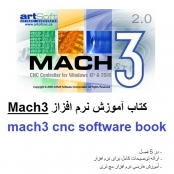Beyond LLMs: Here’s Why Small Language Models Are the Future of AI
The main purpose of this best AI programming language is to get around Python’s restrictions and issues as well as improve performance. Large systems and companies are using Rust programming language for artificial intelligence more frequently. It is employed by organizations including Google, Firefox, Dropbox, npm, Azure, and Discord. Due to its efficiency and capacity for real-time data processing, C++ is a strong choice for AI applications pertaining to robotics and automation. Numerous methods are available for controlling robots and automating jobs in robotics libraries like roscpp (C++ implementation of ROS). Fast runtimes and swifter execution are crucial features when building AI granted to Java users by the distinguishing characteristics of this best AI language.
Artificial Intelligence (AI) is undoubtedly one of the most transformative technological advancements of our time. AI technology has penetrated numerous sectors, from healthcare and finance to entertainment and transportation, shaping the way we live, work, and interact with this world. Moreover, Scala’s advanced type system uses inference for flexibility while ensuring robustness for scale through static checking. Asynchronous processes also enable the distribution of AI workloads across parallel infrastructure. Its declarative, query-based approach simplifies focusing on high-level AI goals rather than stepwise procedures.
For natural language processing (NLP), you have the venerable NLTK and the blazingly-fast SpaCy. And when it comes to deep learning, all of the current libraries (TensorFlow, PyTorch, Chainer, Apache MXNet, Theano, etc.) are effectively Python-first projects. Which programming language should you learn to plumb the depths of AI? You’ll want a language with many good machine learning and deep learning libraries, of course.
By 1962 and with the aid of creator John McCarthy, the language worked its way up to being capable of addressing problems of artificial intelligence. Lisp (historically stylized as LISP) is one of the oldest languages in circulation for AI development. NLP is what smart assistants applications like Google and Alexa use to understand what you’re saying and respond appropriately. Machine learning is a subset of AI that involves using algorithms to train machines.
Therefore, you can’t expect the Python-level of the resources volume. AI programming languages play a crucial role in the development of AI applications. They enable custom software developers to create software that can analyze and interpret data, learn from experience, make decisions, and solve complex problems. By choosing the right programming language, developers can efficiently implement AI algorithms and build sophisticated AI systems. The libraries available in Python are pretty much unparalleled in other languages. NumPy has become so ubiquitous it is almost a standard API for tensor operations, and Pandas brings R’s powerful and flexible dataframes to Python.
AI-Powered Product Development: Coding, Testing and Launch
This popular LLM is behind most of the AI features in Meta’s apps, including the AI assistant, Meta AI. The Generative Pre-trained Transformer (GPT) model is one of the most popular LLMs. You can foun additiona information about ai customer service and artificial intelligence and NLP. If you’ve dabbled into AI tools, chances are you’ve tried it through one of the apps it powers, ChatGPT.
For a more logical way of programming your AI system, take a look at Prolog. Software using it follow a basic set of facts, rules, goals, and queries instead of sequences of coded instructions. Despite its flaws, Lisp is still in use and worth looking into for what it can offer your AI projects.
AI programming languages power today’s innovations like ChatGPT. These are some of the most popular – Fortune
AI programming languages power today’s innovations like ChatGPT. These are some of the most popular.
Posted: Fri, 01 Mar 2024 08:00:00 GMT [source]
Python is the most popular language for AI because it’s easy to understand and has lots of helpful tools. You can easily work with data and make cool graphs with libraries like NumPy and Pandas. Prolog is a declarative logic programming language that encodes knowledge directly into facts and rules, mirroring how humans structure information. It automatically deduces additional conclusions by connecting logic declarations.
This is vital for AI projects that use diverse and large data sources. Plus, R can work with other programming languages and tools, making it even more useful and versatile. R has many packages designed for data work, statistics, and visualization, which is great for AI projects focused on data analysis.
It has a syntax that is easy to learn and use, making it ideal for beginners. Python also has a wide range of libraries that are specifically designed for AI and machine learning, such as TensorFlow and Keras. These libraries provide pre-written code that can be used to create neural networks, machine learning models, and other AI components. Python is also highly scalable and can handle large amounts of data, which is crucial in AI development.
This AI model lets you generate videos using only your photos
So the infamous FaceApp in addition to the utilitarian Google Assistant both serve as examples of Android apps with artificial intelligence built-in through Java. Originating in 1958, Lisp is short for list processing, one of its original applications. But although Python seems friendly, it’s well-equipped to handle large and complex projects. Developers cherish Python for its simple syntax and object-oriented approach to code maintainability.
R stands out for its ability to handle complex statistical analysis tasks with ease. It provides a vast ecosystem of libraries and packages tailored specifically for statistical modeling, hypothesis testing, regression analysis, and data exploration. These capabilities enable AI professionals to extract meaningful insights from large datasets, identify patterns, and make accurate predictions.
The language is widely used in AI research and education, allowing individuals to leverage its statistical prowess in their studies and experiments. The collaborative nature of the R community fosters knowledge sharing and continuous improvement, ensuring that the language remains at the forefront of statistical AI applications. With data mesh, domain-specific teams take ownership of their AI applications. These teams are closest to business challenges and opportunities; they are best positioned to identify and implement high-impact AI use cases. They can rapidly prototype, test, and iterate AI solutions, ensuring close alignment with their particular operational contexts and strategic goals. This not only accelerates the development and deployment of generative AI solutions but also ensures that they are closely aligned with each department’s specific operational contexts and strategic goals.
For most use cases, SLMs are better positioned to become the mainstream models used by companies and consumers to perform a wide variety of tasks. Sure, LLMs have their advantages and are more suited for certain use cases, such as solving complex tasks. However, SLMs are the future for most use cases due to the following reasons. Centralization ensures consistent data quality, security, and compliance standards—critical best languages for ai factors for successfully developing and deploying reliable generative AI models. By unifying these resources, organizations can more effectively navigate the challenges of implementing AI technology while maximizing its potential benefits. ” organizations must weigh the trade-offs between centralization and decentralization when implementing transformative technologies like generative AI.
Julia’s wide range of quintessential features also includes direct support for C functions, a dynamic type system, and parallel and distributed computing. But that shouldn’t deter you from making it your language of choice for your next AI project. You can build neural networks from scratch using C++ and translate user code into something machines can understand. Yet, in practice, C++’s capacity for low-level programming makes it perfect for handling AI models in production. In the present day, the language is just as capable, but because of its difficult syntax and complicated libraries, it’s rare that developers flock to Lisp first.
For example, a quicker response is preferred in voice response systems like digital assistants. Other options are also available, which you might think are LLMs but are SLMs. This is especially true considering most companies are taking the multi-model approach of releasing more than one language model in their portfolio, offering both LLMs and SLMs. One example is GPT-4, which has various models, including GPT-4, GPT-4o (Omni), and GPT-4o mini. Large language models (LLMs) hit the scene with the release of Open AI’s ChatGPT. Since then, several companies have also launched their LLMs, but more companies are now leaning towards small language models (SLMs).
Support
Additionally, the AI language offers improved text processing capabilities, scripting with modular designs, and simple syntax that works well for NPL and AI algorithms. It also enables algorithm testing without the need to actually use the algorithms. The qualities that distinguish Python from other programming languages are interactivity, interpretability, modularity, dynamic typing, portability, and high-level programming. Languages like Python and R are extremely popular for AI development due to their extensive libraries and frameworks for machine learning, statistical analysis, and data visualization. Python, with its simplicity and extensive ecosystem, is a powerhouse for AI development.
Swift, the programming language developed by Apple, can be used for AI programming, particularly in the context of Apple devices. With libraries like Core ML, developers can integrate machine learning models into their iOS, Chat GPT macOS, watchOS, and tvOS apps. However, Swift’s use in AI is currently more limited compared to languages like Python and Java. JavaScript, traditionally used for web development, is also becoming popular in AI programming.
You’re right, it’s interesting to see how the Mojo project will develop in the future, taking into account the big plans of its developers. They sure will need some time to work up the resources and community as massive as Python has. Julia isn’t yet used widely in AI, but is growing in use because of its speed and parallelism—a type of computing where many different processes are carried out simultaneously. The languages you learn will be dependent on your project needs and will often need to be used in conjunction with others. For most of its history, AI research has been divided into subfields that often fail to communicate with each other. The term “artificial intelligence” was first coined in 1956 by computer scientist John McCarthy, when the field of artificial intelligence research was founded as an academic discipline.
It’s an open-source tool that can process data, automatically apply it however you want, report patterns and changes, help with predictions, and more. Come to think of it, many of the most notorious machine learning libraries were built with C++. Smalltalk is a general-purpose object-oriented programming language, which means that it lacks the primitives and control structures found in procedural languages.
Ready to shortlist the best LLMs for your business?
But companies and people in this space have apparently been unaware of covert racism in their models and have not spent time evaluating it, he noted. Technically, it belongs to a class of small language models (SLMs), but its reasoning and language understanding capabilities outperform Mistral 7B, Llamas 2, and Gemini Nano 2 on various LLM benchmarks. However, because of its small size, Phi-2 can generate inaccurate code and contain societal biases.
SLMs need less data for training than LLMs, which makes them the most viable option for individuals and small to medium companies with limited training data, finances, or both. LLMs require large amounts of training data and, by extension, need huge computational resources to both train and run. SLMs focus on key functionalities, and their small footprint means they can be deployed on different devices, including those that don’t have high-end hardware like mobile devices.
This prevalence has created a fantastic playing ground for companies looking to develop more AI solutions. Haskell has various sophisticated features, including type classes, which permit type-safe operator overloading. To that end, it may be useful to have a working knowledge of the Torch API, which is not too far removed from PyTorch’s basic API. However, if, like most of us, you really don’t need to do a lot of historical research for your applications, you can probably get by without having to wrap our head around Lua’s little quirks.
The early AI pioneers used languages like LISP (List Processing) and Prolog, which were specifically designed for symbolic reasoning and knowledge representation. Scala thus combines advanced language capabilities for productivity with access to an extensive technology stack. The language boasts a range of AI-specific libraries and frameworks like scikit-learn, TensorFlow, and PyTorch, covering core machine learning, deep learning, and high-level neural network APIs. For example, if you want to create AI-powered mobile applications, you might consider learning Java, which offers a combination of easy use and simple debugging. Java is also an excellent option for anyone interested in careers that involve implementing machine learning programs or building AI infrastructure.
Building a Personal Brand in Tech Without Prior Experience
It offers the most resources and numerous extensive libraries for AI and its subfields. Python’s pre-defined packages cut down on the amount of coding required. Also, it is easy to learn and understand for everyone thanks to its simple syntax. Python is appreciated for being cross-platform since all of the popular operating systems, including Windows, macOS, and Linux, support it. Because of these, many programmers consider Python ideal both for those new to AI and ML and seasoned experts. R ranked sixth on the 2024 Programming Language Index out of 265 programming languages.
The most notable drawback of Python is its speed — Python is an interpreted language. But for AI and machine learning applications, rapid development is often more important than raw performance. The best programming languages for artificial intelligence include Python, https://chat.openai.com/ R, Javascript, and Java. Additionally, R is a statistical powerhouse that excels in data analysis, machine learning, and research. Learning these languages will not only boost your AI skills but also enable you to contribute to the advancements of AI technology.
Advancements like OpenAI’s Dall-E generating images from text prompts and DeepMind using AI for protein structure prediction show the technology’s incredible potential. Natural language processing breakthroughs are even enabling more intelligent chatbots and search engines. Prolog, a portmanteau of logic programming, has been here since 1972. Plus, Java’s object-oriented design makes the language that much easier to work with, and it’s sure to be of use in AI projects.
- Aside from the 2001 science fiction film with Haley Joel Osment, artificial intelligence is a complex and profound subject area.
- The field of AI systems creation has made great use of the robust and effective programming language C++.
- But one of Haskell’s most interesting features is that it is a lazy programming language.
- While IPython has become Jupyter Notebook, and less Python-centric, you will still find that most Jupyter Notebook users, and most of the notebooks shared online, use Python.
By learning multiple languages, you can choose the best tool for each job. C++ is a powerful, high-performance language that is often used in AI for tasks that require intensive computations and precise control over memory management. However, C++ has a steeper learning curve compared to languages like Python and Java.
Important packages like ggplot2 for visualization and caret for machine learning gives you the tools to get valuable insights from data. It’s a key decision that affects how you can build and launch AI systems. Whether you’re experienced or a beginner in AI, choosing the right language to learn is vital. The right one will help you create innovative and powerful AI systems. Although Python was created before AI became crucial to businesses, it’s one of the most popular languages for Artificial Intelligence. Python is the most used language for Machine Learning (which lives under the umbrella of AI).
Python is a general-purpose, object-oriented programming language that has always been a favorite among programmers. It’s favored because of its simple learning curve, extensive community of support, and variety of uses. That same ease of use and Python’s ability to simplify code make it a go-to option for AI programming. It features adaptable source code and works on various operating systems. Developers often use it for AI projects that require handling large volumes of data or developing models in machine learning.
You also need frameworks and code editors to design algorithms and create computer models. Because Mojo can directly access AI computer hardware and perform parallel processing across multiple cores, it does computations faster than Python. With Python’s usability and C’s performance, Mojo combines the features of both languages to provide more capabilities for AI. For example, Python cannot be utilized for heavy workloads or edge devices due to its lower scalability while other languages, like C++, have the scalability feature.
Discover the top insights and practical tips on software development outsourcing in our latest ebook. Drive your projects beyond expectations and surpass your business objectives. Altogether, the theme of Haskell’s attractiveness for AI developers is that the language is efficient.
Its straightforward syntax and vast library of pre-built functions enable developers to implement complex AI algorithms with relative ease. Artificial intelligence (AI) is a rapidly growing field in software development, with the AI market expected to grow at a CAGR of 37.3% from 2023 to 2030 to reach USD 1,811.8 billion by 2030. This statistic underscores the critical importance of selecting the appropriate programming language. Developers must carefully consider languages such as Python, Java, JavaScript, or R, renowned for their suitability in AI and machine learning applications. By aligning with the right programming language, developers can effectively harness the power of AI, unlocking innovative solutions and maintaining competitiveness in this rapidly evolving landscape. Julia is a high-performance programming language that is focused on numerical computing, which makes it a good fit in the math-heavy world of AI.















